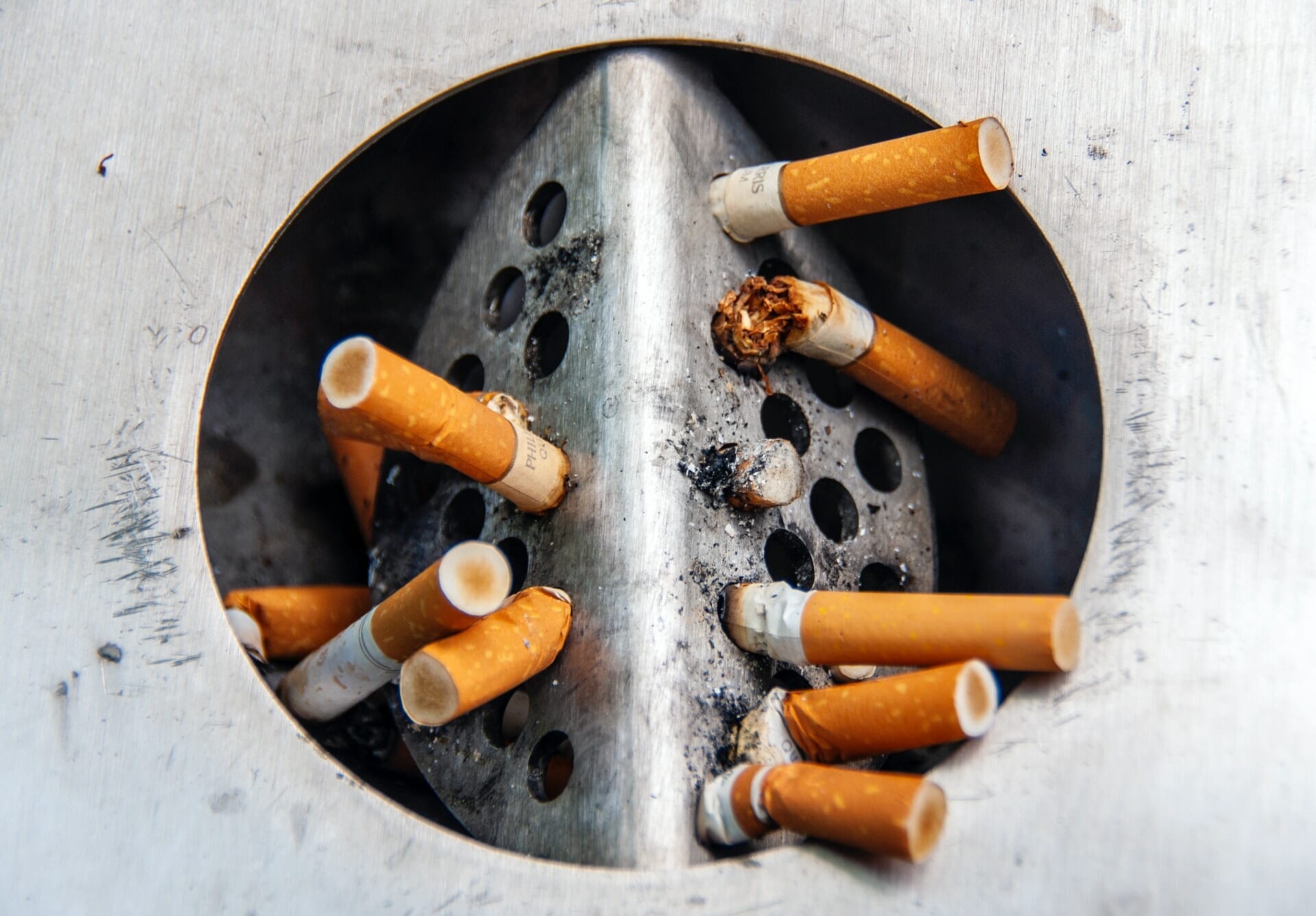What is Tobacco?

Learn More About Tobacco
Used for centuries by cultures throughout the world, there are few plants as storied as the tobacco plant.
Yet, despite its use by 1.337 billion people worldwide (World Health Organization, 2018), many consumers are still a bit fuzzy on what tobacco really is, where it comes from, how its grown, what types of chemicals it produces, the potential health concerns and more.
In this guide we explore everything there is to know about tobacco, answering some of the most pressing questions about this culturally significant and historical plant.
What is Tobacco?
Description, Habitat and Taxonomy
Description
The tobacco plant is a herbaceous perennial or annual plant that typically reaches between 4-6ft or 1.2-1.8m in height by the peak of the growing season. The plant’s stems are green, hairy and thick, featuring stems that end in large oval elliptical leaves. These leaves are the most agriculturally important aspect of the plant. Growing up to 20” long and 10” wide, it is the leaves that are harvested for tobacco use in a wide range of products.
During the flowering stage of the growth cycle, tobacco produces large tubular clusters of flowers ranging from red and pink, to white. Each tubular cluster can reach between 3.5-5.5cm or 1.25-2” in length.
Taxonomy
Tobacco refers to the dried leaves of tobacco plants -- several plants in the genus Nicotiana. To date, more than 60 different species of tobacco plants have been discovered.
However, the plant that most people associate with tobacco, as well as that cultivated to make commercial tobacco, is the Nicotiana Tobacum.
Taxonomy of Nicotiana Tobacum
- Kingdom: Plantae
- Class: Maqnoliopsida
- Order: Solanales
- Family: Solanaceae
- Genus: Nicotiana L.
- Species: Nicotiana Tabacum L. (i.e. cultivated tobacco)
Origin and Habitat
These herbaceous plants are indigenous to the Americas, Australia, southwest Africa and the South Pacific. Historically, Nicotiana Tobacum was originally cultivated in the Caribbean by the indigenous people who lived there.
Although the plant is native to tropical and subtropical America, in modern times the plant has been cultivated throughout the world. Due to its widespread production, tobacco is rarely found in the wild. Instead, tobacco is grown in hotbeds or cold frames as seedlings in large manufacturing plants -- and then transported to larger fields when they reach maturity.
Types of Tobacco
Brightleaf Tobacco: Regardless of the state of origin, this variety is more commonly referred to as “Virginia tobacco”. As compared to traditionally ‘fire cured’ tobacco, Brightleaf was introduced due to the demand for a lighter, milder and more aromatic tobacco leaf.
Aromatic Fire Cured: As the name aptly suggests, this variety of tobacco is cured using smoke from open fires. Across the US, Aromatic Fire Cured tobacco is most commonly grown in Virginia, Kentucky and Tennessee.
Broadleaf: A notably dark variety, made popular for its large and durable wrapping leaves.
Cavendish: Not a variety, but rather a process for cutting and curing tobacco, with the intent of bringing out the naturally sweet flavor of the leaves.
Burley Tobacco: A type of air-cured tobacco most commonly used in cigarettes.
Criollo Tobacco: Considered to be among the original tobaccos used in Cuban cigars, this variety dates back to the time of Columbus and is used in the production of cigars to this very day.
Turkish Tobacco: Notably aromatic, this small leaf, sun-cured variety is grown throughout Turkey, Bulgaria, Greece and Macedonia. Sometimes referred to as ‘oriental’ tobacco, it is most commonly used in pipe tobacco blends and in cigarettes.
Dokha: Originating from Iran, this variety is often mixed with herbs, bark and leaves when smoked in a type of hookah.
Shade Tobacco: Cultivated throughout Massachusetts and Connecticut, this tobacco dates back to early colonial days and Native American tribal use. Due to an invasion of brown spot fungus in 2000, this plant is currently in danger of extinction.
Perique: Utilizing a unique pressure fermentation method, Perique was developed in 1824. Today, this variety is considered the ‘truffle of pipe tobaccos’, revered by connoisseurs and discerning palates. However, it is usually too strong to be smoked on its own, and is most often combined in blended pipe tobaccos.
White Burley: A milder variety of air-cured leaves founded back in 1865.
Wild Tobacco: Indigenous to Mexico, the Southwestern United States, and parts of South America.
What are the Chemical Contents of Tobacco?
According to the FDA, tobacco naturally contains several harmful chemicals, including but not limited to:
- Nicotine
- Lead
- Cadmium
- Nitrates
- Trace fertilizers
The FDA reports that these ‘natural’ chemicals can be harmful if ingested, smoked or chewed, stating that as the plants grow, the concentration of harmful chemicals builds up and concentrates in the leaves.
REFERENCE: https://www.fda.gov/tobacco-products/products-ingredients-components/chemicals-every-tobacco-plant
Tobacco leaves also contain several different alkaloid compounds, including nornicotine, neonicotine, anatabine, and myosmine, as well as polyphenols and micronutrients that naturally occur in plants.
Individual plants may contain different concentrations of chemical compounds, depending largely on their maturity, environmental conditions, and what products growers choose to use on plants.
Tobacco Smoke
Chemical Soup
Tobacco smoke is made up of thousands of different chemicals, many of which have been linked to causing cancer. To date, the FDA has identified nearly 7,000 chemicals in tobacco smoke, including known caustic and cancer-causing agents such as lead, cadmium, acrolein, acetaldehyde, benzene, ammonia, carbon monoxide, nitrosamines, and 1,3-butadiene.
Nicotine
Of these chemicals, nicotine is one of the most widely known. People may be surprised that nicotine, itself, is not a carcinogen. However, it is the major chemical compound responsible for the addictive nature of tobacco products, and when heated and inhaled (such as with smoking or vaping), has been shown to damage DNA, increasing the risk of developing cancer and other medical conditions.
All tobacco products contain nicotine, which has immediate relaxation effects, as well as stimulation. Nicotine acts as a stimulant in low doses but can be a nervous system depressant in high doses -- in extremely high doses it can depress the respiratory system enough to be lethal.
Chronic exposure changes brain chemistry which can result in dependence and withdrawal symptoms. While there is a wealth of information about the negative effects of inhaling tobacco products, there’s significantly decreased research about Nicotine as an individual chemical.
Tobacco carcinogens come mainly from the method of delivery: smoking the tobacco, rather than Nicotine. However, other smokeless tobacco products such as the Swedish tobacco product snus, still have significant carcinogen components.
How is tobacco grown, harvested and cured?
Tobacco is not a difficult plant to grow -- however, it is a difficult plant to harvest and cure without the appropriate facilities or tools. Interestingly enough, tobacco plants are part of the same family as tomato plants, peppers, and eggplants. As such, it likes similar growing conditions: full sun and well-drained soil.
Without full sun, expect spindly looking plants, stunted growth, and small leaves. Plants will also grow poorly or die without an appropriate drainage system. It takes approximately 180 to 190 days for a tobacco plant to reach full harvest. Soil PH should waver around 5.8 for its best growth. The most common pests for these plants are budworms, aphids, and hornworms.
Harvesting and Curing Tobacco
Harvesting and curing tobacco is a lengthy and involved process. Once tobacco plants reach 70 to 130 days, the entire plant is cut and hung on a large tobacco stick. Leaves are then harvested at intervals while they mature.
To prevent breakage before curing, tobacco leaves are left to wilt for a few hours to two days. Curing involves four major steps: wilting, yellowing, coloring, and drying. Each step is highly regulated to ensure the desired properties. The most common methods for curing are by air, fire, or flue. Air curing takes around two months and is accomplished by mechanical ventilation in buildings.
The fire curing process is similar, except open wood fires are lit while the tobacco hangs until the desired finish has been attained -- up to 10 weeks. Finally, the flue process happens in a small bar constructed with metal pipes called flues. These flues conduct heat into the barn from attached furnaces; the process takes four to eight days.
What are the Environmental Impacts of Tobacco Agriculture?
Pesticides and Chemicals
Unfortunately, tobacco production has a staggeringly negative impact on the environment. Since commercial tobacco has such a high demand, it’s grown as a monocrop -- independent from rotation with other crops. This results in soil vulnerability to a variety of pests and the solution requires an outstanding amount of pesticides and dangerous chemicals to encourage production. Toxic chemicals from pesticides and fertilizers seep into the soil, as well as endanger the lives of the people who work with the plants.
Deforestation
Additionally, tobacco production results in widespread deforestation to find room to produce massive amounts of tobacco plants. The World Health Organization estimates that more than 1.5 billion hectares of forests have been lost to tobacco production since the 1970s. Deforestation results in a significant loss of biodiversity, as well as contributes to climate change and rising CO2 levels.
An estimated 11.4 million metric tons of wood are required for the tobacco curing process, and even more is required for tobacco rolling papers. Cigarettes, alone, require some of the highest environmental costs. These include the chemicals used in tobacco leaf preparation, metals to help manufacture and ship the cigarette-making machines, and energy from coal or gas to manufacture and distribute products.
What are the different products made from tobacco and what are their characteristics?
Cigarettes
There are many different forms of tobacco products widely available in markets around the world. Cigarettes, of course, rank among the most popular, with about a billion smokers worldwide. In the US alone, the CDC reports that nearly 14% of all adults age 18 and older smoke cigarettes (as of 2019). This comes out to about 34.1 million adults.
Whereas factory made cigarettes are more popular in the United States, rolling tobacco is more common in other countries in the European Union, the UK, and Canada. Although, contrary to popular belief, roll-your-own (RYO) cigarettes are not safer or healthier than factory-made cigarettes.
Cigars
Cigars are bundled tobacco leaves encased in a wrapper tobacco leaf. This wrapper is the most expensive part of the cigar and determines the cigar’s flavor and character. Traditional and quality cigars are handmade by an experienced cigar roller.
Hand-rolled cigars need to be pierced before lighting, and unlike cigarettes, smokers draw the smoke into their mouth rather than inhaling into their lunches.
E-cigarettes, E-Cigs, Vaping
E-cigarettes, also known as vapes, have become more popular with teens and young adults. These are electronic nicotine delivery systems that are designed to emulate a cigarette or cigar using aerosolized vapor instead of smoke. Vapes have a rechargeable base and look similar to a pen or a USB charger.
Although vaping was introduced as a healthy alternative to smoking, many vape smokers suffer from serious lung injuries and current research has shown that inhalation of vape juice is harmful to the lungs and cardiovascular system, increasing the risk of everything from heart attacks and stroke, to pulmonary diseases.
Smokeless Tobacco Products
In addition to smoking, there are a variety of smokeless tobacco products. One of the most common smokeless tobacco products in the United States is chewing tobacco. Chewing tobacco is sold as loose leaves, braided leaves or compressed leaves. Users put the tobacco leaves between their cheek and gum -- where it's absorbed to get the nicotine effects.
Snuff is similar to chewing tobacco; it is finely ground tobacco sold in tins and the route of administration is the same as chewing tobacco. Snus (pronounced snoos) is a Swedish-produced smokeless tobacco product, which is basically snuff in a small pouch. Unlike chewing tobacco and snuff, snus is produced to allegedly reduce the cancer-causing bacteria. However, all forms of tobacco come with a risk, and smokeless tobacco has a higher risk for a variety of dental issues.
Who uses tobacco, and in what regions is it most popular?
China and India have the highest consumers of tobacco products. China has the most smokers but India has the most smokeless tobacco consumers.
Tobacco Production
In 2020, China accounted for 39% of the world’s tobacco production. India is the second-largest exporter at 12%, and Brazil is third at 11%. Zimbabwe produces only slightly more than the United States at around 3% of the world's tobacco. The State Tobacco Monopoly Administration is the government agency in China that oversees the production and regulation for most of the tobacco produced in the world.
Tobacco production in the United States is mostly limited to North Carolina, Georgia, and Kentucky. Although the United States used to be a powerhouse of tobacco production, its legacy has been eclipsed by production in rural areas of China, India, and Brazil. Many believe that the United States is in the midst of its final production puff, with US tobacco companies relying on less expensive foreign tobacco to make products.
Tobacco Users
Over 80% of tobacco users come from low and middle-income countries. Eastern Europe has more smokers than parts of Western Europe. Indonesia also has a high level of tobacco consumption.
Among Indonesian adults, over 30% of them consume tobacco products -- mostly clove-flavored cigarettes called kreteks.
In the United States, smoking is highest among people in the Midwest and lowest among people in the West. However, anti-smoking campaigns have proved effective over the years.
Countries with aggressive anti-smoking campaigns like the United States and the U.K. have had the highest rate of quitters over the last couple of decades. Various countries have implemented similar methods to deter citizens from consuming tobacco products. These include anti-smoking campaigns, as well as taxes, and tobacco advertising regulations.
Within the past few years, e-cigarettes have had a boom in popularity, particularly among young people. In 2018, 1 in 5 American high school students reported using e-cigarettes. Studies show that e-cigarette use is much more common in rural areas of the United States, compared to urban areas.
MOUNTAIN Smokes®
ZERO TOBACCO. ZERO NICOTINE. Premium Organic Full-Flower Hemp Smokes.
 SHOP MOUNTAIN SMOKES
SHOP MOUNTAIN SMOKES Made in the USA
Made in the USA Satisfaction Guaranteed
Satisfaction Guaranteed SSL Secure Checkout
SSL Secure Checkout


